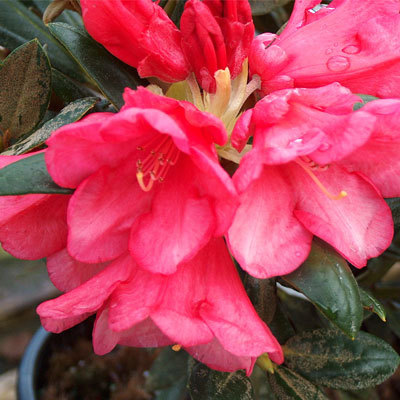When Carol Yee, owner and operator of Carol’s Collectibles in Swanville, first discovered yak rhododendrons (Rhododendron yakushimanum) while living in Connecticut in 1996, she started pestering friend and neighbor Bill Cullina for information.
To keep her occupied and satisfy her quest for more rhododendrons, Cullina — who like Yee has since moved to Maine, working at Coastal Maine Botanical Gardens — taught Yee how to propagate rhododendrons and other woody plants.
Yee shared that information with the Belfast Garden Club earlier this month, and I talked with her by phone after the meeting.
She started by saying that if you want to propagate in winter, you have to use evergreen plants. In most cases, winter is the best time for propagating evergreens.
In addition to rhododendrons, Yee said, plants you can propagate now include conifers, junipers, hollies, boxwood, ivies, andromeda and so on.
“You want to wait until you get a day without the (rhododendron) leaves being all curled up; that it’s above freezing in other words,” she said.
You want to find a stem with growth from the previous growing season, preferably near the ground, and cut a branch or stem that is about a quarter-inch in diameter. Avoid flower buds if you can, but if you do get flower buds, you can snap them off.
Put all of your cuttings in a plastic bag. If you can’t get to the rooting process right away, you can put a damp paper towel into the plastic bag with the cuttings and store the bag in your refrigerator.
Yee told one story about a friend who cut some stems, stored them in a refrigerator for about nine months, then mailed them to Yee in July when it was baking in her black mailbox. The stems still rooted.
“The point of the story is to give it a try,” Yee said. “You never know.”
The “soil” material used for rooting is called Cornell mix, after the New York university where it was developed. It is made up of half peat moss and half perlite or vermiculite. Generally, there is also ground limestone and fertilizer added. People once used mixtures of peat moss and sand.
“You just want something that will not hold the water but will stay damp,” she said.
When Yee did her first rootings in 1996, she found an aquarium in the cellar, put sand on the bottom, and added the rooting mix on top of that. She then put in the cuttings, covered the aquarium and put a light nearby and they rooted — even though she checked in on them too often.
If you don’t have an aquarium, you can cut a 2-liter soft-drink bottle in half and put that over a plant pot. What you are creating is essentially a terrarium.
The light doesn’t have to be very bright, and you don’t leave it on 24 hours a day. The rooting will go more quickly if the temperature is warm — and especially if you use an electric heating tray — but that is not required. Yee keeps her house cool and her greenhouse even cooler, and she has success.
Before putting the cut stem into the planting mixture, you have to wound the side of the stem by making a half-inch slice lengthwise in the bark.
For most woody plants, Yee recommends using a rooting hormone such as Hormodin, which you can find in most garden shops. You can also buy the Cornell mix in bags or bales; just follow the label directions. But for some plants like willows, such treatment isn’t necessary.
If you take cuttings from a young plant that you recently purchased, you know that it was created through plant tissue culture. It probably already has a lot of extra hormones in its leaves, so you wouldn’t have to use the Hormodin. And, it goes without saying that you aren’t propagating these plants for sale — they are for your own use only. Otherwise, you would have to check plant patents, pay fees and so on.
A few months after setting up your terrarium of cuttings, you can lift the cover for increasing amounts of time so the young plants get used to the real world. Don’t look too often for fear of disturbing the plants, but after a while you can check for root growth from the cuttings.
If you get that root growth, sometime in the spring, you can carefully put the new plants into pots, keeping them indoors and moist but not wet, as you would a potted plant.
And with plants like rhododendrons and azaleas, especially, you shouldn’t plant the young plants outside in the garden until the second summer after you plant the cuttings.
“This is not a quick business,” Yee said. “You need to be patient.”
Yee’s nursery in Swanville — which was moved from Connecticut after she retired from her other job at Prides Corner Farms — specializes in unusual and fall-blooming plants. You can check it out at www.carolscollectibles.com.
Tom Atwell can be contacted at 791-6362 or at:
tatwell@pressherald.com
Send questions/comments to the editors.


